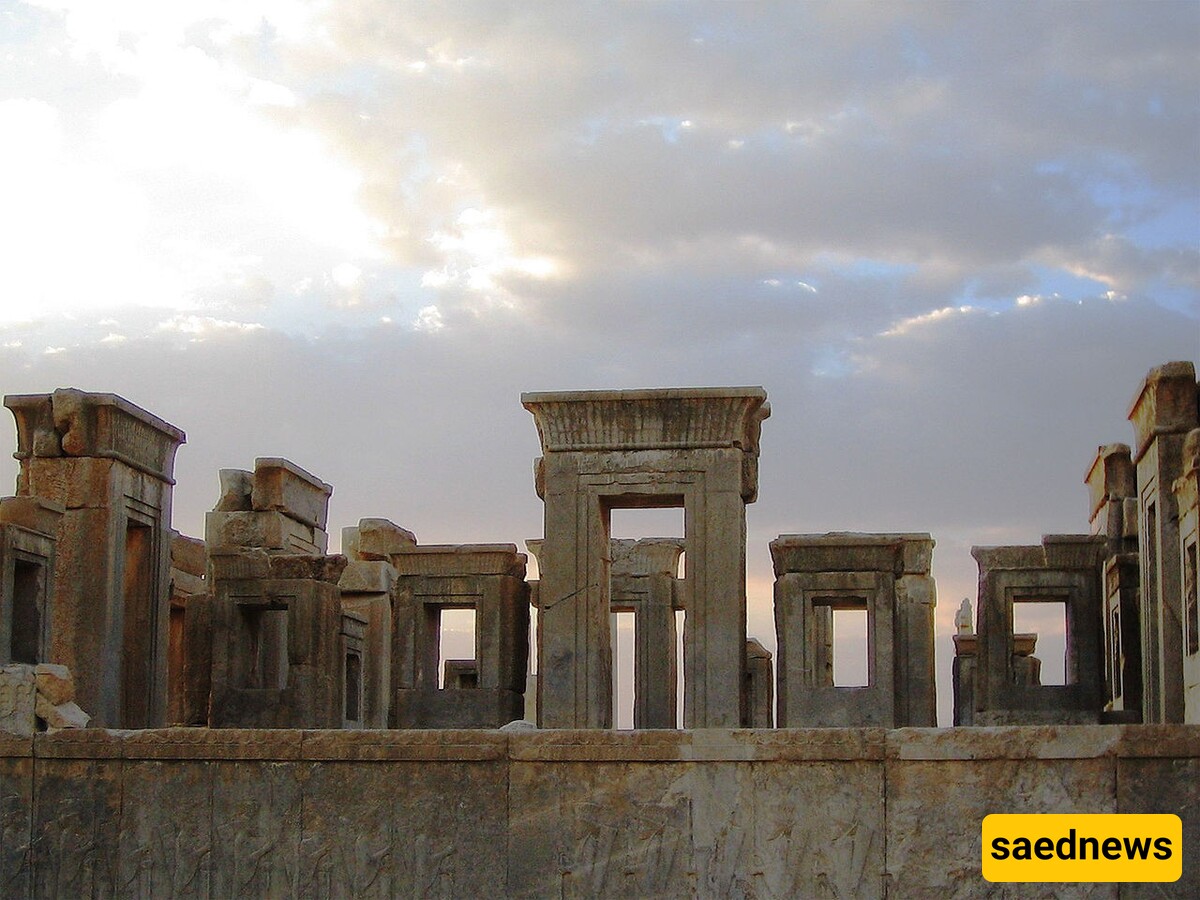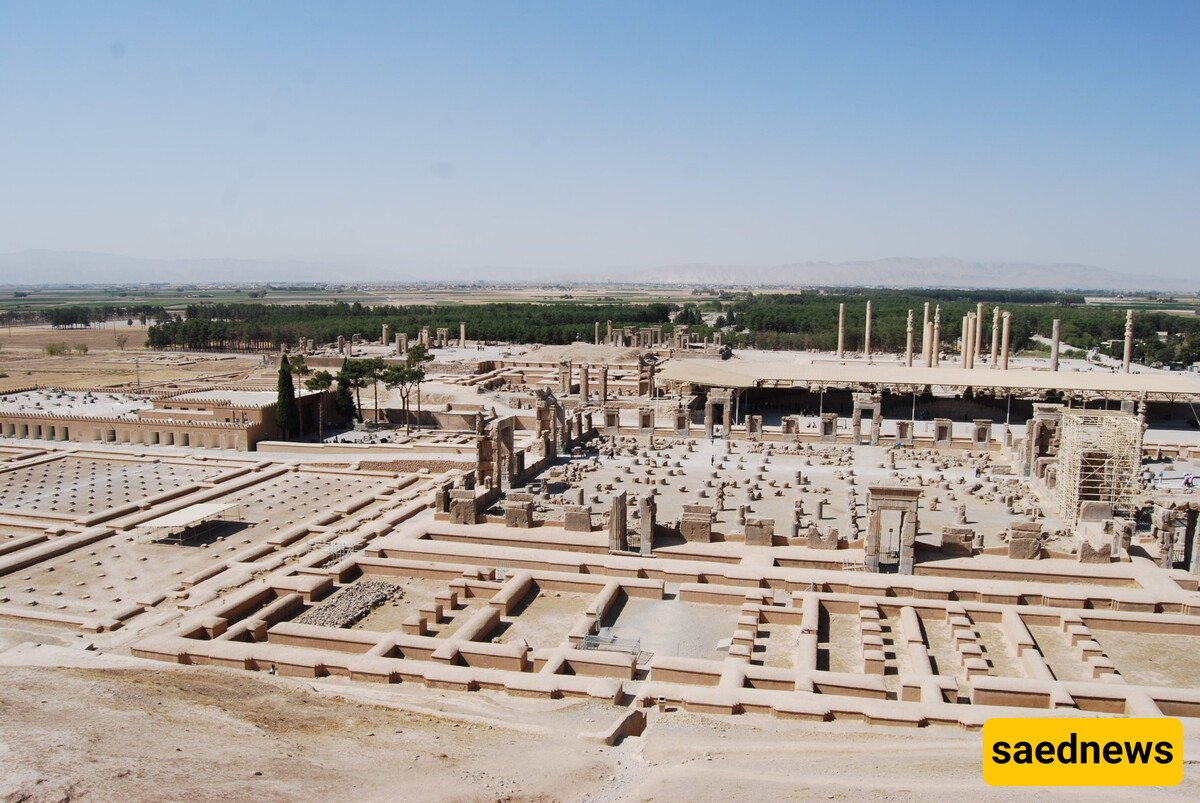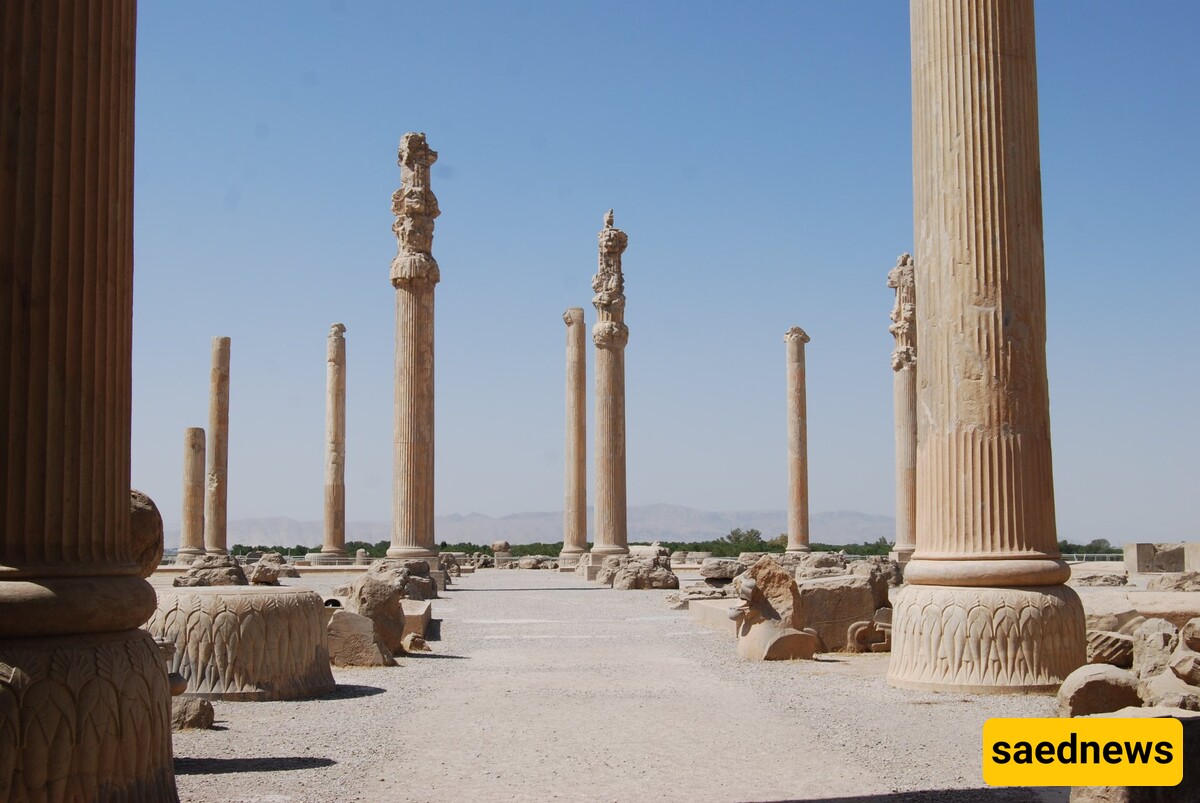SAEDNEWS: Persepolis, or Takht-e Jamshid, is a UNESCO site and former ceremonial capital of the ancient Persian Empire, built over two thousand five hundred years ago. This iconic ruin displays Persia's architectural splendor and cultural richness, drawing visitors and history enthusiasts from around the globe to marvel at its enduring legacy.

Reporting from SAEDNEWS, Founded around 518 BCE by Darius the Great, Persepolis became a ceremonial heart for the Achaemenid Empire, showcasing Persia's wealth, influence, and artistic prowess. Located in the Marvdasht Plain, surrounded by mountains near present-day Shiraz, Darius envisioned Persepolis as a symbol of his reign’s grandeur and the empire's lasting influence. Constructed as a city for ceremonies, it hosted envoys, royal gatherings, and annual festivals where kings would receive tributes from all corners of the empire.
Darius’s successors, particularly Xerxes and Artaxerxes, expanded on this vision, transforming Persepolis into an architectural masterpiece that symbolized Persian unity and culture. Its construction spanned more than a century, blending both Persian and foreign influences into something distinctively monumental. Today, its ruins continue to convey the splendor and sophistication that once captivated the ancient world.

Persepolis stands as a triumph of ancient engineering and artistic talent, featuring a complex of palaces, halls, and terraces that demonstrate the best of Achaemenid architecture. Rising from the rocky landscape, its terraces, pillars, and grand staircases are crafted from gray limestone and blend seamlessly into their natural surroundings.
The Apadana Palace is perhaps Persepolis’s most awe-inspiring structure. Designed as a grand audience hall by Darius and completed by Xerxes, it spans over one thousand square meters, with rows of massive columns that once supported a wooden ceiling. The Apadana’s columns, standing at twenty meters, were crowned with intricately designed animal motifs, symbolizing Persia’s strength. The staircases leading to the Apadana are decorated with finely chiseled reliefs that depict the empire’s unity, showing scenes of delegates from around the empire bringing offerings to the king. Each figure is distinct, representing a different culture under Persian rule, making the reliefs a record of both Persian dominance and the empire’s diverse peoples.
Each element of Persepolis reflects symbolic craftsmanship intended to convey power, spirituality, and empire. The "Gate of All Nations," built by Xerxes, features imposing winged bulls with human heads, representing both protection and divine guardianship. This gate, towering at the entrance of Persepolis, would have been the first glimpse visitors had of the imperial capital, setting a tone of grandeur and reverence.
Another masterpiece, the Throne Hall (also known as the Hall of 100 Columns), features intricate stonework depicting the king seated on his throne, flanked by guards and attended by servants, emphasizing the central role of the king. Scenes of Persian soldiers and royal attendants carry a regal message, reinforcing the authority and unity of the empire. This elaborate iconography not only highlights the king’s strength but also symbolizes the connection between the ruler and his people, underscoring the Achaemenid ideals of loyalty and unity.

Persepolis thrived for almost two centuries until its abrupt end in 330 BCE. Alexander the Great, who sought to conquer the Persian Empire, invaded Persepolis and reportedly looted its vast treasures. Historians believe that Alexander set fire to Persepolis as a symbolic act of revenge for Persian attacks on Greece or as a display of dominance. Whatever his motive, this act left much of the city in ruins, marking the end of its role as the heart of the Persian Empire.
Despite its destruction, Alexander's act did not erase Persepolis's legacy. The remaining structures and artifacts continue to speak to the greatness of the Achaemenid Empire, and the site's historical significance remains unparalleled.
In the centuries following its fall, Persepolis was largely forgotten by the world, its ruins swallowed by time. However, rediscovery and excavation efforts in the twentieth century unearthed the site, rekindling global interest in ancient Persia’s achievements. In 1979, Persepolis was designated a UNESCO World Heritage site, ensuring its preservation and recognition as a cultural treasure.
Today, Persepolis stands as one of Iran’s most visited landmarks. Thousands of tourists, scholars, and historians from around the globe come each year to marvel at its grandeur and gain insight into the Persian Empire’s history. The preservation efforts focus on protecting these relics from environmental threats and ensuring the durability of carvings and reliefs that have survived for over two millennia.
Persepolis remains not just an archaeological site but a symbol of Iran’s deep cultural roots and architectural genius. Its timeless structures serve as a bridge between ancient and modern worlds, revealing the art, innovation, and ideals that defined the Achaemenid Empire. As ongoing preservation efforts help shield Persepolis from the ravages of time, this ancient city continues to inspire, educate, and evoke admiration among visitors, ensuring that the legacy of Persia's golden age endures.


